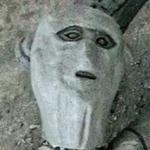|
so long as we keep their bellies filled, pockets full, and minds active, the people of Tibet will thank us im happy to see the national alliance work toward consensus and provide common-sense leadership
|
|
|
|

|
| # ? May 31, 2024 09:21 |
|
The Grasp is essentially the proto-fash party, all militarism and revanchism.
|
|
|
|
We have so many pro-war parties. The realignment is gonna be hilarious Edit: Just picture a political cartoon with a person (Tibet) being dragged along by a bunch of dogs (the various parties) as they try and bite at Wu or Asia. There also might be a dog representing the not pro-war parties Xelkelvos fucked around with this message at 00:48 on Nov 11, 2021 |
|
|
|
Xelkelvos posted:There also might be a dog representing the not pro-war parties 
|
|
|
|
On the one hand, having a mega-campaign with a positive ending is still something the LP forum hasn't officially achieved yet. On the other hand, the sunglass pyramid flag ain't going to wave itself.
|
|
|
|
Xelkelvos posted:We have so many pro-war parties. The realignment is gonna be hilarious On one side, a mighty Tibetan Mastiff pulling the country forward:  On the other, a smol Lhasa Apso trying to hold the country back: 
|
|
|
|
The timid Tibetan spaniel pathetically pleading for peace:
|
|
|
|
A Tibetan terrier who's all, like, dudes, what is up?
|
|
|
|
Kangxi posted:Yes, stretching between Oberpfalz and Tirol.
|
|
|
|

|
|
|
|
God, I really do not want us to have to fight an offensive war in Vicky. Especially not Lategame Vicky.
|
|
|
|
Fivemarks posted:God, I really do not want us to have to fight an offensive war in Vicky. Especially not Lategame Vicky. What are you talking about everything will be fine just look at byzlp 
|
|
|
|
Personally I can see no issue with a ww1 style campaign being primarily fought between equal belligerents in the Ganges and yellow rivers
|
|
|
|
Fivemarks posted:God, I really want us to have to fight an offensive war in Vicky. Especially Lategame Vicky.
|
|
|
|
Kangxi posted:What are you talking about everything will be fine just look at byzlp I seem to recall that it's gas warfare that gets results like that, or something?
|
|
|
|
Lustful Man Hugs posted:I seem to recall that it's gas warfare that gets results like that, or something? Yeah. You could probably stack modifiers to get the same results, but gas attack is a straight +4 so gives incredible results (until the opponent has gas defense).
|
|
|
|
Chapter 86: 1810 to 1821 - Empire of Liberty Excerpts from The Pageant of Tibetan History by Indra Pandit - a Textbook for Children in Secondary Education Published with the Support of the Friends of the Society of Lasya the Holy Fifty years after the end of the Tibetan Empire, old ideas are being examined again. In the great capital of Lhasa, and in many other cities across the old empire, the drums of war are silent and the dungchens cry out again. But we must consider both sides of the great historical debate: Was the era of the early Tibetan Republic an era of backwardness and corruption, or was it a time of great dynamism and innovation? In this unit, we are going to discuss: -The Lasyaist Tribunals -The Deka Administration -The Kosala Incident -The Prome War -The Agricultural Revolution and the Second Industrial Revolution The Tibetan Republic in the 1810s was undergoing a period of confusion. This was not always because of the popularity or unpopularity of any ruling party or any coalition of parties, but partly due to a long shift in how people in the Republic thought of themselves, as well as the world they lived in. The fall of the Tibetan Empire had occurred almost sixty years ago, and the structure of society had changed. Many of the problems that had built up for years and that had directly contributed to the fall of the monarchy in the first place had been resolved, but society was still different from the modern day, and only slightly recognizeable.  The Revolutionary Tribunals, which had previously been understood in previous historical texts as a strange and unrecognizeable event, may be interpreted in a different context. The Tribunals were established in 1810 and continued through to 1815, and their stated goal was to find counter-republican elements within the Republic. There are several competing explanations here - the first is that while incomes and the standard of living had been rising for some years following the end of the Final War Against the Sacred Empire, there was a growing awareness of conditions and also a possible discontent. Additionally, future generations of leaders may have felt that the goals of the republic were not yet established, and so that the revolution had to be continued for its goals to be achieved.  This phenomenon of may have been linked to the Hierarchic Crisis, where in 1810 a woman claiming to be the incarnation of the Divine Lasya had seized control of the Sacred Hierarchy. The Hierarchy had been one of the few institutions that had remained relatively intact over the past centuries, and the fact that this seat was now held by someone with more mystical and heterdox beliefs inclinations was at first a cause for concern.  The power of the Hierarchy was diminished over the past 20 years in particular; the disestablishment of the Sacred Tibetan Empire in 1785, monastic holdings had been seized by competing kingdoms, and the power of the clergy had diminished drastically. From its peak four centuries ago, the Hierarchy's holdings were then limited to a small fort in Rajasthan.  This decline in ecclestiastical authority on the one hand, was balanced by a general content with the government of the Republic.  In many cases, the relative freedom given to local government, and the establishment of elected government at the town, village, and monastery level, meant that issues could be addressed with greater input and with more local knowledge.  The Ye Tritsuk administration in Lhasa primarily concerned itself with some construction projects, as before, but also in avoiding any foreign conflicts.  The press of the early republic continued to report on foreign events, in attempts to inform the broader public and satisfy their growing interest in the outside world. Many publications continued to report on the Anatolian Republic, both as a Republican idea to emulate,  And for the continued success of its military campaigns.  In some publications, the tone changed from admiration to outright envy.  Where others continued to call for more 'revolutionary campaigns' along the model of Tefere Assefe Abateid of the Anatolian Republic, or Tolun Fuyuan of the Tibetan Republic's own history. Too much had been lost to the whims of local tyrants, and the Republic still needed to combat monarchism if it was to survive.  By the close of 1810, both the revolutionary and the more expansionist feelings expressed within the Tibetan electorate combined to elect a more militaristic candidate, Deka Jianze, an Assamese-Han Chinese candidate who had considerable experience in the army.  His reputation was controversial. His detractors would say he was another ruthless figure and one who had shifted the revolutionary republic towards more expansionism.  His supporters would say that he was an advocate for the common citizen of the Republic, an opponent of the corrupt aristocracy in Lhasa, a gallant Tibetan gentleman praising the gods,a defender of justice and protector of the poor.  For that matter, the Kosala Incident of 1811 provides some context to the Deka administration's foreign policy and goals. While detractors would say that this was a violation of international law, the exact status of the former Kingdom of Kosala had been in doubt since the formal dissolution of the Sacred Tibetan Empire.  The integration of the remnants of the former Kingdom - now reduced to a rump state and now barely in control of its former territories, was an act of protection from the Republic to other major cities and still providing them a masure of independence that would not have been possible otherwise. In-Class Activity: Debate and Discuss! -Pretend that you are a solider in the Tibetan Republican Army, ready to bring down the Kosalan monarchy. Write about how you feel. Are you excited? Do you feel like you want to be a hero?  The 1810s continued to bring regional shifts in Southeast Asia. The Ayutthaya, once a major player in the region, had been almost completely supplanted by a federal Cham kingdom..  The Kingdom of Yue, one of the successor states that had formed out of the collapse of the Tibetan Empire in the 1700s, had continued to expand to the west and south.  Additionally, the former elector-kingdoms of the Sacred Tibetan Empire were no longer immune to any changes. The Kingdom of Rajputana, for example, lost more territory to its neighbors, and at the expense of Mewat Kingdom and the Sacred Hierarchy, which had fought bravely to prevent its own extinction.  And finally, the other republics of the world were on the move. The Anatolian Republic began a series of campaigns in 1811 to destroy the remaining Tibetan successor states in Persia.  In response to any further threats of encroachement, and partly to restore lost territories in the years of the Revolution, Deka Jianze launched a campaign to recover the territories along the Irrawady, which had been ruled by the King in Prome.  The Yi armies, instead of being part of a long-drawn out conflict, had laid down their arms without a fight.  The campaign had come at a time where there were considerable doubts about the strength of the army, and the Nyingchi Affair of 1812, and the Military Appropriations Funds of 1810 and 1812 represented the uncertainty of the debate over where or even if the Tibetan Republic could maintain a standing army.  These debates were already matters of great importance, as the army had grown more powerful in the Republic,  and the army, aside from some fringe elements, has broadly supported by all.  The reassertion of the tributary status of the Yi only proved the army's importance, and came down as a decisive argument in favor of a standing army. As one public figure of the time was quoted: "Perhaps we could ask everyone else to disband their armies?" In-Class Activity: Debate and Discuss! -Have a class debate over if the Tibetan Republic should have an army. Argue for or against. Come up with three supporting arguments for your point of view and address three criticisms of your point of view.  The Prome War of 1812 was a small war, with only a few thousand Tibetan casualties.  Compared to the mighty conflagration of the Anatolian invasion of Persia, which lasted for 5 years and involved tens of thousands of troops,  or any of the more prolonged wars that resulted after the dissolution of the Sacred Tibetan Empire, this was a shorter conflict indeed.  The Prome War was conclued in 1813, with the total annexation of the territory of the former kingdom, and the Republic now controlling much of the Irrawady Delta and the valuable trade that it flowed along its banks.  The successful conclusion of the war had led a positive impact on the morale of many in the Republic, who had felt satisfied that the old borders of the Republic could be defended, that commerce expanded, and that the concepts of liberty could be spread to a greater population. Relieved Tibetans, who at first had been wary and suspicious of war, could boast of "Not Another Inch Lost!"  The 1810s also were a period of continued change in Tibetan society. With the gradual internal migration of the population from herds and smallholding farms to cities, greater industrial growth and trade became possible. With improved roads, better steamboats, and better sea trade routes, people and goods were able to move at a faster pace and further than before.  Great movements of people were more commonplace, and it was not uncommon for colonial powers to transport detachment of troops to defend their holdings or protect their trade ports.  It was in this environment that the Tibetan Republic emerged from its domestic turmoil and foreign expansionism by 1815.  While there were still suspicions that circulated in the press, the general position of the Republic during the Deka Jianze administration was more secure.  It is true that he was dogged by some scandals involving blatant corruption and budgetary issues,  he still soared through the elections of 1815 and became the first Sikyong since Tolun Fuyuan to win reelection.  In his second term, he began to turn to the National Alliance of 1756 and implement more ideas about how a republican society would organize itself - in commerce, which had mobilized itself in warfare and other construction projects, and the discussion of the division of labor and its lead to economic prosperity - he, too, hoped for a general prosperity and universal opulence for all.  His term would be marked by no more 'revolutionary campaigns', as the Anatolians continued to engage,  and Deka began to engage with the leading scientists and natural philosophers of his time, and spend more of his time in long salons and celebrations. Primary Source: The Speech at the Academy in Etawah Deka Jianze gave this speech to an assembled crowd at Etawah on June 11, 1819. What do you think about the priorities behind this speech? What would you think if you were listening to this speech? What kind of inventions would you like to work on?  "I have spent a lot of time in the army. I remember that I owe everything to it. I would not be here because of it. Now I am here at this fine place. What is the name of the Head of the Academy? Ms. Mukherjee. Yes." "I kiss this book of knowledge in front of the assembled public, where everything can be gathered and where all knowledge can be put in the hands of the republic.  "We are not barbarians. We are not- we are not."  "We have sown and reaped the benefits of modern scientific techniques, and now famine is starting to vanish from this earth and may be gone from this earth, all the time, forever."  "I do wonder if we have uncovered all the mysteries of heaven and earth, that everything has been discovered."  "Famine is now starting to vanish from this earth in some corners, and soon it will be gone everywhere. Yes."  "With the steam engine, the semaphore telegraph, the world itself is a treasure to be held. Now with speed of movement, speed of communication, the banishment of plagues, the machine press, the spinning wheel. The powers of human invention are limitless, our ability to shape and master nature is essential!"  "What a fascinating modern age we live in!" End note: We acknowledge that some inhabitants of the Republic regret the history of the imperial conquests. We affirm that these feelings merit discussion and understanding. (Due to recent legislation, it has become required and customary to include this statement or similar statements in various materials discussing various elements of Tibetan history.) THE WORLD: 1821 
|
|
|
|
That's it. I've finally reached the end of Europa Universalis stage of the LP. I will post a labelled version of the map and take questions, and there will be an epilogue.
|
|
|
|
And so we pass into modernity.
|
|
|
|
The Taira are cockroaches, and easily my favorite nation.
|
|
|
|
The end of an era.
|
|
|
|
Oh yes, any special requests for the last state of the world update for 1821?
|
|
|
|
I'd like a bit about the major religions of the world and how they spread during the eu4 period, if that even happened.
|
|
|
|
Kangxi posted:Oh yes, any special requests for the last state of the world update for 1821? the state of majestic ground sloths please
|
|
|
|
Information in Incan successors, please
|
|
|
|
For an IG question - are there recognizable international blocks with any staying power? I'm partially inspired by the revolutionary republics ending up in a brawl despite ideological alignment. Or is it basically every-nation-for-itself? For an OG question - with the experience of having gotten through an entire EU4 LP leg, what would you do differently if you did it again/could tell your past self what to do? What would you tell another person thinking about embarking on their own EU4/mega LP?
|
|
|
|
Like, everything looks fine, but isn't Vicky precisely where these LPs have a history of going tragically?
|
|
|
|
Fivemarks posted:Like, everything looks fine, but isn't Vicky precisely where these LPs have a history of going tragically? In what way exactly, in the LP sense, or the narrative sense?
|
|
|
|
SirPhoebos posted:In what way exactly, in the LP sense, or the narrative sense? Kangxi posted:What are you talking about everything will be fine just look at byzlp
|
|
|
|
Huh, wonder what things would have been like if the Lasya Returns event had fired back when the Sacred Heirarchy was still a reasonably strong power.
|
|
|
|
Obligatory requests about not-California, Japan, Taira and that blob in East Africa, I can't remember who they are.
|
|
|
|
Kangxi posted:Oh yes, any special requests for the last state of the world update for 1821? Who controls the Chesapeake? The Marylander inside me demands to know.
|
|
|
|
zealouscub posted:Obligatory requests about not-California, Japan, Taira and that blob in East Africa, I can't remember who they are. Ethiopia iirc
|
|
|
|
Are the Khazars still kicking? I have my own theory that I've developed after reading several of these mega-campaigns as to why so many of these threads take a turn for the  . A lot of this is based on a blog someone shared talking about EUIV in an academic context (I unfortunately don't have the link atm). . A lot of this is based on a blog someone shared talking about EUIV in an academic context (I unfortunately don't have the link atm).CKII presents a story of history being shaped by powerful families. So every person, every vassal, and every general comes with a whole slew of traits to form distinct personalities. This provides hooks for crafting a narrative that appears to be divergent from the course of irl history that goes beyond "the borders look different". In addition, the nature of the vassalage systems makes suffering setbacks a lot less onerous. So an LP is not going to wind up in a deathspiral state-and even if it does in a strict gameplay sense, it's a simple matter to switch to a different house in order to continue the narrative (see the ByzLP). So there is a lot more to do in this part of the LP besides paint the map. EUIV is different in both of these regards. EUIV is about nation-states. If there is any flavor to a country, it needs to be set up in advanced through the focus tree. While the game is on the same level of complexity as it's predecessor, all of the systems are in the service of expansion, either through warfare or colonization. Every country has the same technology tree, just modifiers to how fast they research. So as a result, when the lp gets to this page, the overall history it tells is very similar to IRL, it's just the names of whose expanding and colonizing that has changed. The tools to express how day-to-day life would look different are much slimmer. The second big difference is that there is a much more pronounced failure state. So trying to present a country's fortunes as ebbing and flowing is much riskier. And this is particularly true if you are playing with the intent of carrying on to Vicky. A final factor in all of this is that for several mechanics EUIV presents a definitive "right" way of doing something, even if for decision-makers at the time there was no way of knowing if those gameplay choices represent were the right choice. So as a result by the time EUIV concludes, the countries in these LPs will be in one or two spots: 1) a European-style world power, regardless of where the country is in the world. 2) more rarely, a country that has recently been knocked on it's rear end but still has the means to assert itself on the world stage. Thus we begin Vicky with a nation that is either a well entrenched imperial power or has a strong incentive for a revanchist long-term goal. Once Victoria II begins, all the socio-economic factors that EUIV had abstracted are now available in all the pie-charts you can ask for. Suddenly what had been for a long while an lp that only had map-painting to focus on now has an entire world of Pops to focus on. And I think in a lot of these LPs (especially the participatory ones), this change in focus can be hard to articulate and internalize. So when the lp continues to prioritize map painting and settling old scores, well the country is going to wind up with a political philosophy that accommodates that. And this is on top of the fact that of all the current Paradox games, V2 is the least understood, so it's more prone to outlandish outcomes. So what you end up with most of the time is an lp about a country that you don't feel good rooting for by the end of it. And even if player and/or thread are able to stay the course and not create a monstrosity, you still have to grapple with the fact that the game can just decide that all your neighbors are going to have cascading revolutions and leave you with 5 different flavours of batshit to deal with in HoI4.
|
|
|
|
Until somehow in V2 a OPM corners the supply of money and causes the world economy to enter a deathspiral.
|
|
|
|
I propose that we should avoid all offensive conflicts for all of Vi- ahahah we're not going to managed this.
|
|
|
|
SirPhoebos posted:snip To add to this, it's my view that default Player Behavior in a grand strategy game, if imagined as actual politics, is essentially Fascism By Default. Because your foremost way of interacting with the game, at all times, IS going to be naked conquest or the preparation for it. Further, you are encouraged, if the game features such mechanically, to generally quash most dissent so you, the player, can continue being the primary decision maker (You never want to have a laissez-faire economy in Victoria for example), And also any kind of land taken is not land taken from your historical or semi-mythical ancestors, it's land taken from YOU, so of course revanchism Is the order of the day.
|
|
|
|
STATE OF THE WORLD: 1821 The northern half of Mictlampa, as the Western Hemisphere had come to be called after the first waves of conquest of the Triple Alliance so many centuries ago, is dominated by multiple competing great powers, with regional players plotting between the shifting balances of power between them.  The far north of the continent is the dominion of the Nakota. They have seen nearly continuous expansion since the early 17th century, with every ruler since 1604 acquiring mroe territory. At present, they are engaged in a war with the Chikashsha.  The Diné kingdom is very close to the Nakota orbit and they may be formally united in the coming years. The Hisatsinom are also formally allied to the Nakota.  The great Tsalaghi theocracy occupies the southeastern part of this continent. Despite having lost some territory in their overseas colonies from the 1750s to the 1770s, they are still a global power of considerable reach, and have recently seized the Faroe Islands and Shetland in the past years.  Niukonska has seen better days. In the past seventy years, they have almost totally lost control of the Great Plains - everything from the great Chatiks si chatiks fortress cities on the Missouri River on south - to the Nakota, and even now they are on a two-front war with both the Purépecha and the Nakota.  The Purépecha have also had a rough time of it. Since the 1780s, the Irechecua Tzintzuntzani has lost territory in the metropole, to Tlaxcala, and some of their more distant colonies, such as Friesland. That said, their hold in Itarhia is as strong as ever, and a comeback is still possible.  Further south, there is no one regional hegemon, and there has never been one since the fall of Tawantinsuyu some centuries before.  The Muisca Confederation, as it has been for centuries, remains a stable, prosperous republic. It would seem that the principles of sortition, combined with extended suffrage for local matters, has done them well. From Cuba in the northwest to Paramaribo in the southeast, the Muisca metropole is prosperous and happy. Additionally, the Muisca holdings overseas, particularly in the Niger Delta are doing well, although they are now at risk - they are embroiled, alongside the Anatolians, in a war against the Kingdom of Kongo.  Further south is the kingdom of Chachapoya, which holds much of the great urban centers left behind from the Tawantinsuyu. Their northern border is roughly around the Putumayo, and their southern most reach is at the port of Iquique. Their most properous cities, aside from the capital, remain some of the more isolated mountain towns such as Yurimaguas. The Chachapoya also nominally claim control over the western Amazon rainforest, although affecting any policy changes in the region is difficult.  The last major power in the region is Charca, a primarily Aymara kingdom. They were a serious competitor to Chachapoyas in the late 18th century, but have suffered some setbacks and retreated further south of Lake Titicaca. Additionally, the independence of the Calchaquí has proven a consistent thorn in their side.  Moving further east - the great Malian kingdom is functionally extinct, and has been so since the 1810s with the loss of Timbuktu - its great libraries carefully packed, stored, and preserved for future generations. The Muisca cling to their holdings on the Niger Delta and further towards the Sahel, and several successor states - including the Emirate of Jolof and the 'Republic' (really a personal dictatorship) of the Ashanti are best positioned to recover, after the old empire is dead.  Moving futher east, we find one regional hegemon, one with perhaps continental or global aims.  Ethiopia continues to surprise and astound. One of the greatest of the successor states established by Yasovarman the Great and his campaign westward out of India, the Empire grew and spread across the entire eastern part of the continent. It fought mightily against the republics that arose in the early 18th century, and even held the Anatolians to a standstill. The last great emperor, Abebe III, saw the acquisition of territory up to Lake Tanganyika and even holdings at the very south of the continent, at Yohannespura. But even the most glorious empire must end some day, and the expensive military campaigns, although victorious, contributed to the dissolution of the monarchy and the establishment of a republic in 1789. Succsesive presidents have seen territorial gains as far south as Angoche, and trading posts along the Hong River.  To its west is the Kingdom of Kongo, which has stubbornly held out against Anatolian or other invasions since the 1650s. At present, it is occupying the Anatolian holdings in the former Kingdom of Loango.  Butua is the rising star of this part of the world, having only really become a regional power in the reign of King Nuru (1755-1768) and King Nechisake IV, which saw the establishment of trading posts and the development of a serious textile industry. While the current king saw the loss of the coasts, including the ports of Quelimane to Gujarat in the 1810s, the kingdom remains a serious contender in regional affairs, and its gold and textile imports provide it a solid financial base.  Moving further north, there is only one power that really needs to be addressed.  Anatolia. Anatolia the largest and greatest of the republics. Anatolia, which humiliated Tibet on the other side of the continent. Anatolia, led by the titanic Tefere Assefa Abateid, who won dozens of elections, ruled for 71 years, and who left as an inheritance a republic at the center of the world. Now the great Anatolian Republic stretches from Zagreb to Ardakan, from Azov to Damascus -- and that doesn't even count the colonies. The successors of Tefere Assefa Abeteid have expanded on all fronts, and the current ruler is engaged in a war agains the Kingdom of Kongo. The Republic also holds considerable foreign holdings on the other side of the continent but we'll get to those later.  To the Republic's south is the Hindu-Coptic kingdom of Egypt, led by King Agathonikos XIII Suryavansha. Right now they are engaged in a war along the southern cost of the Mediterranean, and sure not to provoke the suspicion of their republican neighbor. And now we head further north.  It would be easy to mock this continent Awiropa as being the playground of different empires, of being a collection of shores that the waves of different conquerors crash down upon. But the trends of revolution and reaction, and the very fringes of industrial and colonial power still make their presence known.  Few nations may have fallen as rapidly from the heights of hegemony as Carantania. Once a republic, once a great power, and then shattered by the Anatolians in the 1790s. Now foreign conquerors do not even take territory, just settle for some indemnities.  Also of note in a more positive sense is the aristocratic republic of Estonia, which had advanced further south at Poland's expense. They may turn their eyes to the vast steppe, or consolidate their holdings so far.  Further east, many things are possible - the steppe is still apart from the great empires, and the political entities there maintain their independence from them.  The same holds for even further east.  Out of the collapse of the great Mongolian Empire in the 15th century, the Otgonbayars retain a considerable portion of the steppe.  The Taira, once left for dead after their expulsion from the mainland of Japan, now hold a small collection of settlements and isolated groups in the far north, near the Urals and even along the Taui Bay.  Korea was also once a great empire; now it clings to some of its holdings in the Manchu territories after a string of defeats from the So, from Anatolia and Egypt in turn.   So, for their part, have done well for themselves - they do not control the entirety of the Japanese archipelago directly, and the Ainu have rebelled in the cause of creating their own separate republic in 1803, but the trade routes are steady. Some monarchist revolts in Honshu at the moment, but not a serious threat.  Heading further south, we find another area dominated by a single hegemony.  The thalassocratic empire of Majapahit, boasting the largest navy in the world, can be said to have this part of the world almost all as its own possession. In a stunning feat of diplomacy, it has forged an alliance with Ethiopia, which has served both well in maintaining their own spheres of influence across the vast oceans. And now, finally, we turn to Tibet and its part of the world.   To its east, the republic of Wu, named after an ancient state makes the other best claim for a great republic - it has multiple vassals and tributaries gained in the 1810s, and even from the portion of China it controls, likely has a population to rival that of the Tibetan Republic. Rather tellingly, it has formed an alliance with the former Elector-Kingdom, now Republic of Punjab.  Punjab, for its own part, has smarted from the losses inflicted on it by the Tibetan Republic, but is still a serious regional power. Its territory still stretches from the Caspian to Mewar, and has a network of multiple tributary and vassal states such as Rajputana and Kilwa, that cling to it after the dissolution of the Sacred Tibetan Empire.  The Kingdom of Tamilakam was one of the most powerful components of the Sacred Tibetan Empire, and it maintains a powerful overseas presence in its own right. The kingdom has neutralized two of its greatest competitors - the Republic of Tibet and the Vijayanagara kingdom, by forming diplomatic alliances with them.  The Tibetan Republic, after some growing pains in the late 18th century and the revolution, has found some stability in the administration of Tolun Fuyuan in the late 1790s, and then further reconsolidation in the administrations of Houyu Dechen (1800-1805) and in the Jianze Deka administration (1810-1820). It reaps the benefits from the center of multiple trade routes, from its vast populations in its east and south, and allowing just enough regional slack for different domestic policies to be maintained. There are many within the republic who smart at losses from Anatolia and dream of distant revenge, and many others who still hope to venture forth with the republic, in shedding the ancient and brutal tyrannies of the world, and finding a place in a world -- a world of industry and commerce, of republics supplanting empires, where the ancient systems disintegrate and the new world is yet to be established. And the dreams of ancient blood-drunk conquerors still roil in the minds of many. CHARTS: COUNTRIES OF THE WORLD, SORTED BY THEIR TOTAL DEVELOPMENT:  ARMIES OF THE WORLD, BY SIZE:  NAVIES OF THE WORLD, BY SIZE:  RELIGIONS OF THE WORLD, SORTED BY SIZE:  COUNTRIES OF THE WORLD, RANKED BY SCORE (gives some indication of historical powers too)  THE GREAT POWERS OF THE WORLD, 1821  CHARTS ON THE TIBETAN REPUBLIC, PREPARED JOINTLY BY THE MINISTRY OF WORKS AND THE MINISTRY OF REVENUE  TRADE NODES OF THE WORLD, SORTED BY INCOME  RELIGIONS MAP, 1821 (SUBJECT TO CHANGE):  CULTURES MAP, 1821 (SUBJECT TO CHANGE):  DEVELOPMENT MAP, 1821 (To be used as a rough guide for industrialization)  THE WORLD, 1821 (SUBJECT TO CHANGE): 
Kangxi fucked around with this message at 00:48 on Nov 25, 2021 |
|
|
|
Rubix Squid posted:the state of majestic ground sloths please I did buff the cavalry units for the tech groups for the western hemisphere, called 'High American' in the vanilla conversion files - we didn't get a chance to see them, but assume all megafauna are alive and well. Dance Officer posted:I'd like a bit about the major religions of the world and how they spread during the eu4 period, if that even happened. So I've saved a copy of the religions of the world statistics from 1444 and 1821 here and they might be good for a broad view:   Slight decrease in High Church Bön, but if you add High Church and Restorationist Bön together, there is a slight increase from 1821 compared to 1444. The biggest winners are Hindu (from Ethiopia and Majapahit, most likely), Totemist (the Tsalagi probably), Inti, and Bogomilist. Norse took a catastrophic loss and that's almost entirely from colonization and the loss of Scandinavia. Theravada Buddhist took a big loss but Mahayana is doing better. Sunni has a modest increase. Shinto is doing surprisingly well but that may be from the Taira in Siberia. Lynneth posted:Information in Incan successors, please Charca and Chachapoya included in previous post Tulip posted:For an IG question - are there recognizable international blocks with any staying power? I'm partially inspired by the revolutionary republics ending up in a brawl despite ideological alignment. Or is it basically every-nation-for-itself? IG: Punjab has a lot of vassals, many of them were former parts of the Sacred Tibetan Empire. Ethiopia and Majapahit are allies. Muisca and Revolutionary Anatolia are allies. The Tibetan Republic still has a lot of allies in the south, including Tamilakam. OG: Don't do anything big in the middle of a pandemic, for one. I might have done one or two more rounds of real playtesting to catch some of the bugs - they were very persistent and some of the longer delays between posts were partially because I was trying to do brain surgery on a mod and savegame at the same time. EU4 is fun to play but I found it harder to write about, as has been discussed before. CK2 lends itself well to personal dramas, but EU4 is more remote, and while I could have gone for a more textbook style in describing that historical process, I tended to go for more elaborate narrative posts, for better or for worse. Fivemarks posted:Like, everything looks fine, but isn't Vicky precisely where these LPs have a history of going tragically? Well, both ByzLP and AndalusLP had things go badly in EU4 as well. Tibet had some setbacks and stagnation in EU4 but not a total unrecoverable collapse. I did think to myself about how to make everything 'interesting' and throwing more disasters my way to stop the blobbing which is very easy to do, and in fact became much easier after this timeline's Mingsplosion. I'd set up Jin as a big opponent for Tibet but they just fell apart too quickly. V2 is a turbulent time for a lot of LPs, and the Gothic LP had some problems there too. It's harder to tell and I'd have to get back to you. habeasdorkus posted:Huh, wonder what things would have been like if the Lasya Returns event had fired back when the Sacred Heirarchy was still a reasonably strong power. They got a lot of buffs for manpower and army morale; it wouldn't have been hard to imagine them going on a conquering spree. zealouscub posted:Obligatory requests about not-California, Japan, Taira and that blob in East Africa, I can't remember who they are. Added, see previous post. HereticMIND posted:Who controls the Chesapeake? The Marylander inside me demands to know. Tsalagi, although the Shaawanwaki are pretty close.
|
|
|
|

|
| # ? May 31, 2024 09:21 |
|
drat tibet is kinda rich huh?
|
|
|





























